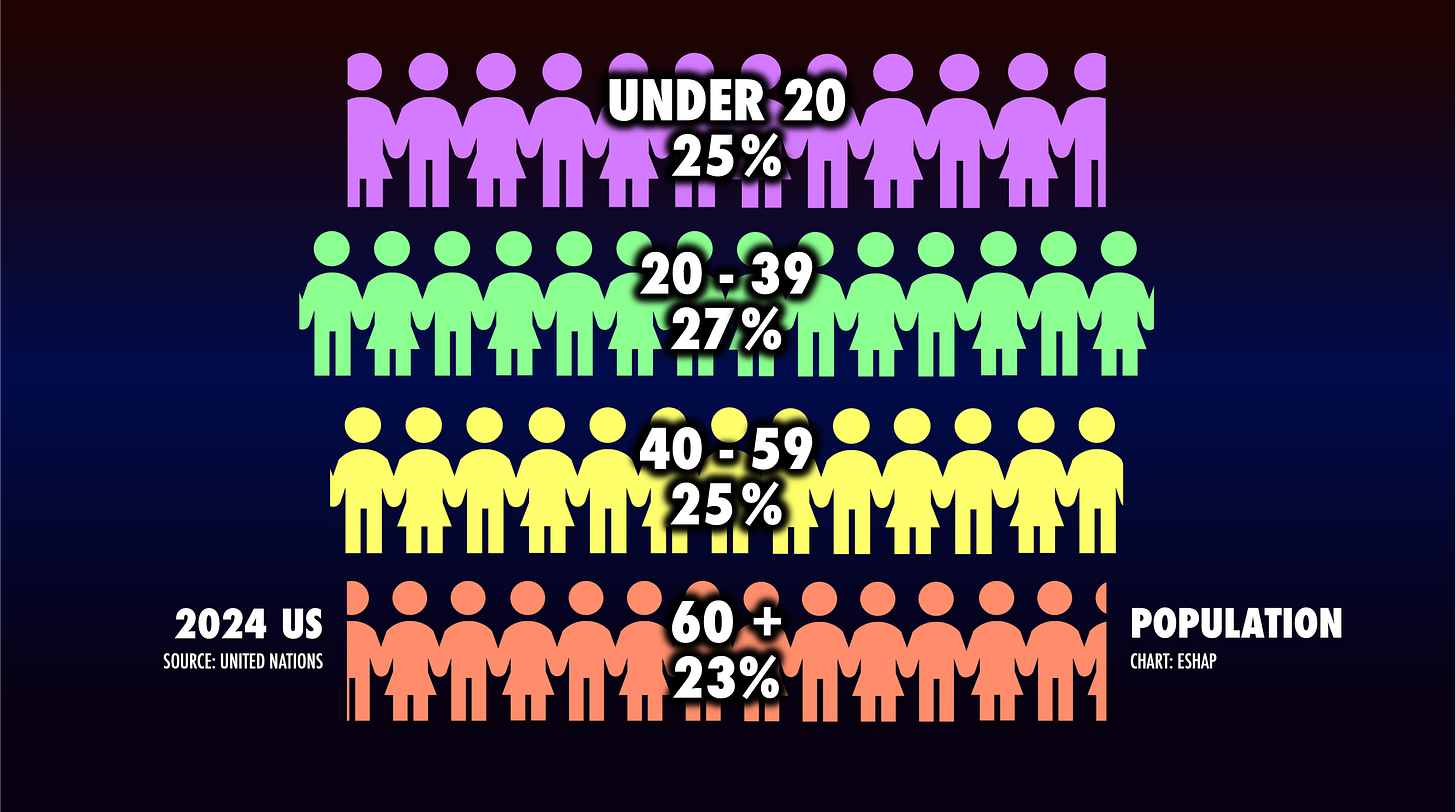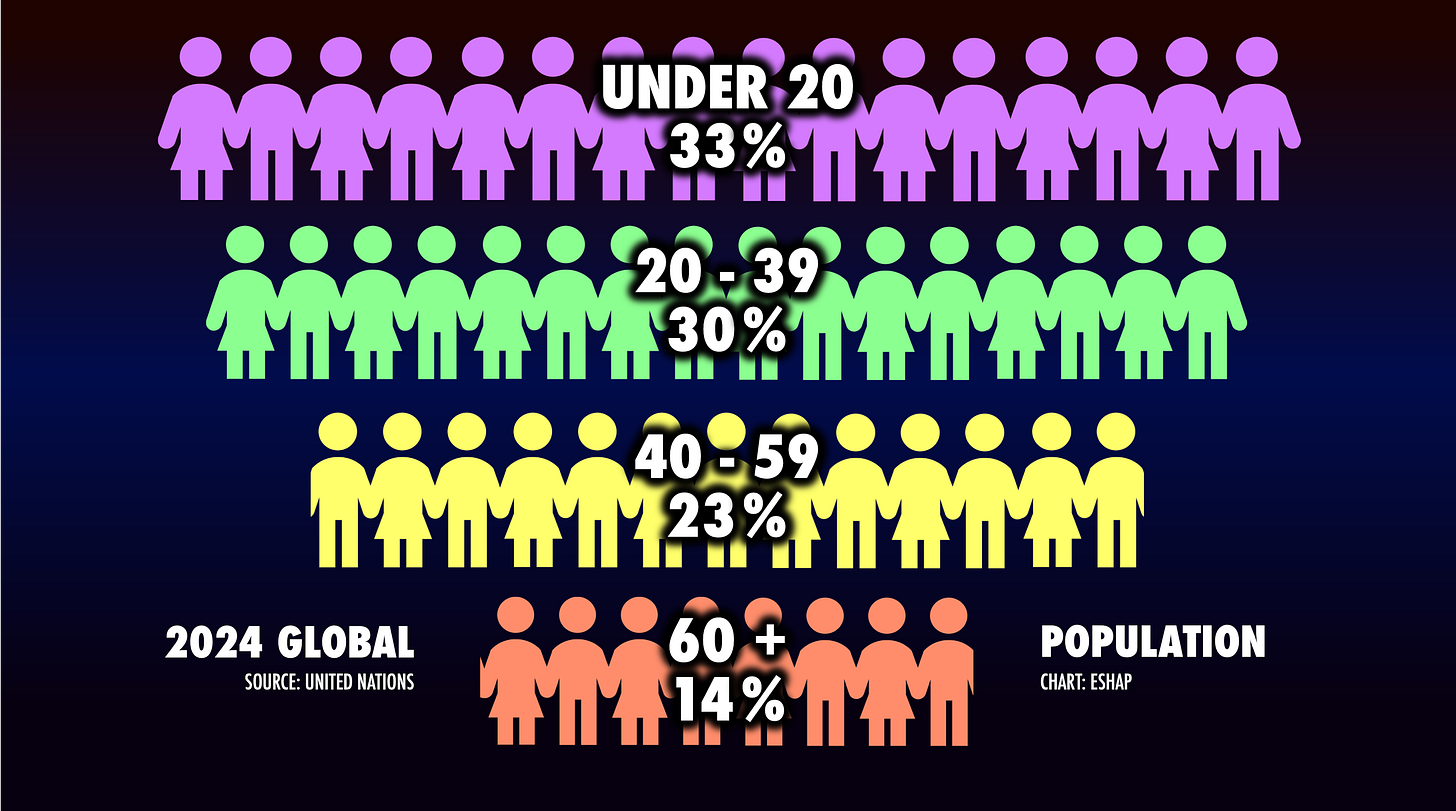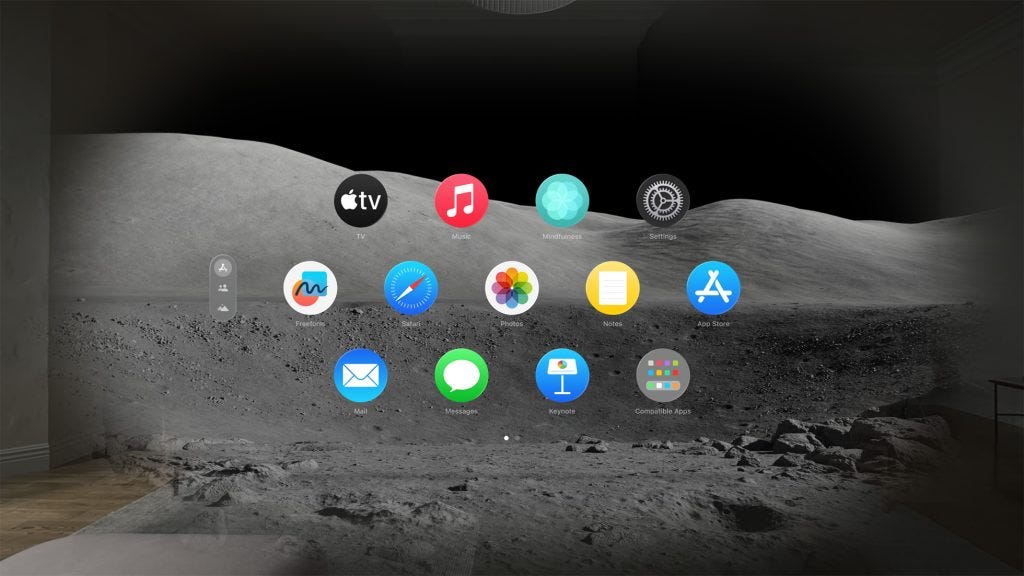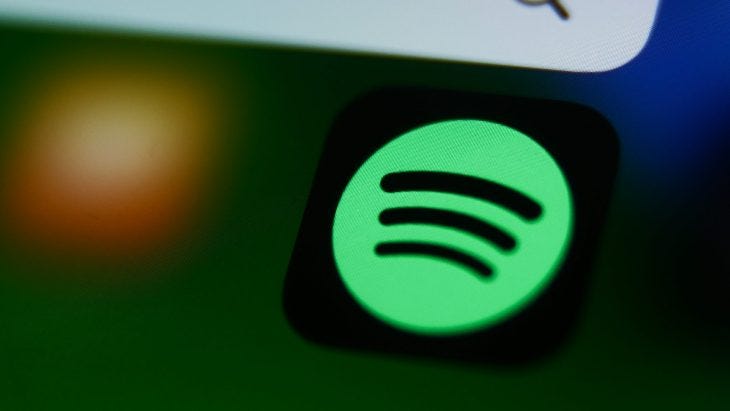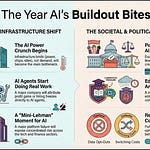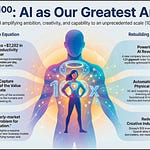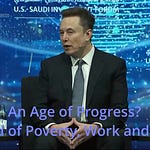A reminder for new readers. That Was The Week collects the best writing on critical issues in tech, startups, and venture capital. I selected the articles because they are of interest. The selections often include things I entirely disagree with. But they express common opinions, or they provoke me to think. The articles are only snippets. Click on the headline to go to the original. I express my point of view in the editorial and the weekly video below.
This Week’s Audio:
Thanks To This Week’s Contributors: @jeffbeckervc, @eshap, @stevesi, @gruber, @daringfireball, @SamuelStolton, @leah_nylen, @mattmday, @chrisheuer, @JoannaStern, @Om, @sarahpereztc, @GeorgeNHammond, @Tabby_Kinder, @NicholasMegaw, @PeterJ_Walker, @SteveAbbott415, @adamlashinsky
Contents
Changing the Customer of Venture Capital (Jeff Becker)
What A Drag It Is (Evan Shapiro)
Building Under Regulation (Steven Sinovsky)
Apple’s Plans for the DMA in the European Union (John Gruber)
Amazon Drops iRobot Deal; Roomba Maker Cuts 31% of Staff (By Samuel Stolton, Leah Nylen, and Matt Day)
Envisioning the Future of Human Work in the Age of AI: The 2024 Forecast (Chris Heuer)
Joanna Stern Wears a Vision Pro for 24 Hours
The Vision Pro (Daring Fireball)
Apple’s Vision Pro -The Meta-Review. (Om Malik)
My 4 magic moments with Vision Pro (Om Malik)
Apple Vision Pro Review: The Best Headset Yet Is Just a Glimpse of the Future (Joanna Stern)
Spotify calls Apple’s DMA compliance plan ‘extortion’ and a ‘complete and total farce’ (Sarah Perez)
Investors raise billions to buy discounted stakes in start-ups (George Hammond, Tabby Kinder, Nicholas Megaw)
Founders: getting to the next venture stage may take longer than you expect (Peter Walker)
The State of the SaaS Capital Markets: A Look Back at 2023 and Look Forward to 2024 (STEVE ABBOTT Partner, Capital Markets, KEVIN BURKE Partner, Strategy)
PayPal is laying off 2,500 employees (Pranav Dixit)
Editorial
You didn’t hear it here first but Apple’s Vision Pro is a hit.
Some wonderful essays in this week’s newsletter. I lead with Jeff Becker’s look at venture capital, focusing on who the customer is. The question “Who is the customer?” is crucial for any product. The answer is easy when the product is an asset class - the customer is the person investing money. Yet most of the venture world pretends that the customer is the entrepreneur. In reality, the entrepreneur is a supplier. She or He supplies opportunity, commitment, and execution; the goal is to grow value by investing customer cash into that supply.
Now it is easy to understand why venture investors sometimes describe the recipient of funding as the customer. It is important that the company feels served by the VC. But serving an investee company is clearly a mission carried out for the VC fund investors, the real customer.
Jeff is addressing a real problem - how to best invest in the supply. I will leave you to read his essay and ponder it, but he proposes a radical re-think of how to do early-stage investing, and for the most part, it argues for a more liberal spread of cash, in larger numbers, to far more founders. It's interesting, to say the least.
Evan Shapiro focuses on the rapid aging of the US population. He makes a strong case:
Since 2019, America’s population has grown by 7.8 million. Yet, the US now has 2.7 million fewer kids under 15 than it did in 2019. Meanwhile, there are now 7.1 million more Americans 65-80 than five years ago. America now has half a million fewer people under 40 than it did in 2019 and almost 8.4 million more people over 40.
At a time when politicians from both sides are falling over themselves to point a finger at immigration as a major problem, it is refreshing to see analysis demonstrating that the US needs more immigrants. And in a context where there is virtual full employment this needs to be across all skill levels and needs to trend young. The essay is great.
Part of the anti-immigrant narrative has focused on DACA - Consideration of Deferred Action for Childhood Arrivals (DACA). Ron Conway is part of a group of over 50 businesses signing an amicus brief to support DACA. Bravo to him.
Hostility to immigrants is never OK. It is even less OK when the economy is desperate for skilled and unskilled willing hands.
Politically inspired propaganda dominated elsewhere this week. Amazon was prevented from closing the acquisition of iRobot due to EU objections based on competitive concerns. Well done, EU. Amazon dropped the deal, and iRobot may well be in trouble as a result. Thirty percent of staff were laid off. And more EU interference when Apple was ordered to allow alternative app stores on the iPhone. Steven Sinofsky's wonderful essay, “Building Under Regulation,” leverages his vast experience at Microsoft. It seems every day it becomes more obvious that the EU is against innovation, especially when it produces successful big companies.
The Congress got in on the act too (see X of the Week), calling social media leaders to DC to be accused, show-trial-like, of being responsible for teen suicides. Sadly, the Meta CEO apologized as if admitting culpability.
Teen suicide and causality is a non-trivial issue, but it is fair to say that Social Media does not cause it. Teens (I have one and another two recently in their post-teen phase). All have had growing up challenges. As I recall, I did also. The world can be harsh in the face of those challenges. But to see social media as the only factor, or even a major one, seems superficial and plain wrong. I wish one of the executives had the nerve to push back against the accusations. Adam Lashinsky’s piece is interesting.
Finally, Chris Heuer has a research piece on AI and the Future of Work. Well done, Chris, this is such an important issue. My PoV is that work, defined as paid labor, will inevitably decline and the average working day will decline. I believe this is a fundamental good for humanity. I also believe it poses enormous global questions about how the abundance made possible will be distributed to improve life for everybody. I do. not think this is the end of human effort. Just the beginning of the end of the need to do paid labor in order to live.
Essays of the Week
Changing the Customer of Venture Capital
The gift of technology
JAN 29, 2024
TLDR: We need to change the customer of early-stage venture capital so that we can fund the future of technology and build global prosperity for decades to come.
Recently, I hosted a group of students from Wharton at Antler’s offices and we talked about the future of early-stage VC.
I alluded to this a couple weeks ago when I said:
…for $5B per year, you could seed the vast majority of meaningful tech companies for 8 years with the amount of money Elon Musk spent on Twitter. (Link here)
The reality is, $5B per year just isn’t that much money in the grand scheme of private equities—roughly .5-1% depending how you slice it.
As a former salesperson, that fact often leaves me wondering, “what if you changed the customer of venture capital?”
Could you attract more money, create more impact, and actually produce more returns?
Classically, putting your name on building was a way to not only have a fairly durable legacy, but let’s be honest, that gift is outdated.
And it hardly does any good in the world.
Instead, legacies and the world’s most important problems alike would be better served by a consolidation of brilliant minds and capital, combined with the speed and leverage of startups.
I think there are two interesting solutions, and both should be built.
The first is something I’d call the 501-VC, and the second would be to fund all of venture capital for a decade or more through a new kind of Giving Pledge.
I’m going to talk about the second one today.
Famously,
The Giving Pledge is a promise by the world's wealthiest individuals and families to dedicate the majority of their wealth to charitable causes.
The problem is, charitable foundations and organizations aren’t historically the most efficient way to solve the world’s problems. They exist for good reason, but most operate like old corporates rather than savvy startups.
However, what if we thought of economic opportunity and global prosperity as a more ubiquitous problem to solve, and instead of funding mission-driven work, we fund the entirety of the tech sector?
What if instead of the average high net worth individual trying to get a 3-5X return over 10 years, you focused on the ultra high net worth population, the economic development groups, and the sovereign funds who are both trying to achieve these returns and trying to improve the world?
What if you focused on their shared goals and values as customers, like creating economic opportunity and building a durable legacy?
What if you could do it in every corner of the planet through access to entrepreneurship?
What if instead of one PayPal Mafia, you had thousands?
What if you had an investor who could actually deploy $5B per year at the formation stage?
That has simply never existed before, and yet it is a defining opportunity for the human race and our evolution as a society.
Currently, high potential employees are stuck in their corporate jobs.
Our brightest minds handcuffed to benefits and addicted to a salary, never realizing their true potential or having a real impact on the world.
Many go get their MBA where they spend money to learn new skills and acquire a network, rather than receive money for becoming a more productive citizen of the world.
Many job hop looking for a low-risk way to get on a rocket ship.
Some try to build their own, but quickly run out of runway and mental fortitude.
It’s a broken system, and we need to rebuild it.
First it requires a product.
The product needs to be for two groups—the founders and the investors.
It starts with the infrastructure required to reduce the risk of being a founder which in turn attracts more of the brightest minds to the job itself. At the same time, the product also has to be an investment vehicle that attracts a new type of customer to early-stage VC.
What A Drag It Is
America Feels Old
JAN 29, 2024
Since 2019, America’s population has grown by 7.8 million. Yet, the US now has 2.7 million fewer kids under 15 than it did in 2019. Meanwhile, there are now 7.1 million more Americans 65-80 than five years ago. America now has half a million fewer people under 40 than it did in 2019 and almost 8.4 million more people over 40.
Because of the sheer size of the Baby Boomer Generation and the fact that younger Americans have pulled out on having kids, in the last five years, America has gotten old - not just compared to itself, but also compared to the rest of the world.
In 2019, 63% of the world’s population was under 40. Now, 64% of the people of the planet are 39 or younger. In short:
Over the last half-decade the world has gotten one percent younger and America has gotten one percent older.
One percent may seem small. However, the consequences of this demographic shift are consequential. For countries like the US, the UK, France, Italy, Germany, and Japan, with aging populations where the number of people over 60 is growing faster than the number of people under 15, the coming years will be filled with challenges brought on by their age: Workforce shortages, inverted dependency ratios where a diminishing tax-base struggles to fund a widening social safety net, health care infrastructures ill-equipped to deal with increased demand. As the world’s wealthiest and most powerful nations continue to age faster than they reproduce, expect these issues to get increased and more urgent attention.
After decades of aging down, the US population is now aging up quickly. In 2000, 58% of the US population was under 40 years old. Now just a slim majority of 51% is under 40. The impacts of this rapid maturation can be felt throughout our culture, but perhaps nowhere as dramatically as in America’s Media and Tech industries.
Over the last half century (but for some intermittent challenges from Japan and China), the US has led the world in entertainment and technology, setting the standard for the world’s consumption of Media. While many TVs and phones are manufactured in other countries, most of the systems, software, and vision for these products has come from America - and the entertainment consumed on these devices has been, for many decades, the United States’ most notable export.
Now, America’s Media Industrial Complex finds itself amidst a widely-reported bloodbath of its own making. Recently, this meltdown has been joined by America’s leading Tech firms. Some of this is cyclical, driven by innovation cycles, advertising recessions, and even the aftermath of the worldwide pandemic. But muchof the current Media Apocalypse was as predictable as the upside-down aging ratio of our population.
The first decade of the 21st Century was marked by an almost inconceivable level of innovation in American Media and Tech. The internet invaded all aspects of our lives. Broadband grew across the country like a high-speed weed, bringing the universe to our desktops, making all our worlds, at once, much bigger and infinitely smaller. By 2012, tiny supercomputers known as smartphones had reached a critical mass in the US and TV was streaming into our homes.
Then, right around that time, America’s Media C-Suite inhabitants seemingly started a shared mid-life crisis, through which we are all still living.
Bob Iger took over Disney in 2005, when he was 53 years old. Through some of the most masterful deal-making in Media history, and (seemingly) a true vision of the future, Iger took a troubled company and turned it into the greatest proprietor of intellectual property the world has ever known. He bought Pixar in 2006, revitalizing Disney Animation. He bought Marvel in 2009, jump stating the most successful film and TV franchise in history. He bought Lucasfilm in 2012, completing what many see as bar-setting hat-trick of entertainment, bringing the most valuable collection of titles in entertainment all under one roof.
Building Under Regulation
An essay on the EU Digital Markets Act and Apple’s "Update on apps distributed in the European Union" (and some personal history)
JAN 27, 2024
Readers note: This is a long post. There are enough hot takes on this super important issue. I welcome corrections as always.
This week Apple detailed the software changes that will appear in an upcoming release of iOS to comply with the European Union Digital Markets Act (DMA). As I read the over 60 pages of the DMA when it was passed (and in drafts before that, little of which changed in the process) my heart sank over the complexity of a regulation so poorly constructed yet so clearly aimed at specific (American) companies and products. As I read through many of the hundreds of pages of Apple documents detailing their compliance implementation my heart sank again. This time was because I so thoroughly could feel the pain and struggle product teams felt in clinging to at best or unwinding at worst the most substantial improvement in computing ever introduced—the promise behind the iPhone since its introduction. The reason the iPhone became so successful was not a fluke. Consumers and customers voted that the value proposition of the product was something they preferred, and they acted by purchasing iPhone and developers responded by building applications for iOS. The regulators have a different view of that promise, so here we are.
To be clear, DMA covers a wide range of products and services all deemed to be critical infrastructure in the digital world. It is both an incredibly broad and sometimes oddly specific regulation. As written the regulation covers at least online intermediation services [commercial internet sites/markets], online search engines, web browsers, advertising services, social network services, video sharing platforms, number-independent interpersonal communications services [messaging], operating systems, virtual assistants, and cloud computing.
If you’re well-versed in online you can map each one of those to precisely who the target might be, or sometimes targets. It is all big tech, almost exclusively US-based companies. There are no EU companies that meet the criteria to be covered—hardcoded revenue of EUR 7.5 billion for three years, EUR 7.5 billion market cap, or 45 million MAU—with Alphabet, Amazon, Apple, ByteDance, Meta, Microsoft, and Samsung acknowledging the criteria apply to various units in addition to the following other “very large online platforms”: Alibaba AliExpress, Booking.com, Pinterest, Snapchat, Twitter, Wikipedia, Zalando [German fashion retailer]. Those thresholds seem strangely not round.
I am going to focus on the Apple and primarily their App Store response because I think it is the most important and time critical and because iPhone is the most unique, innovative, and singular product in market. I can easily replace search, a browser, an ad network, a social network, a video site. Even cloud computing is not so sticky, and we all use multiple messaging services. What iPhone delivers is irreplaceable. At least for many of the subset of smartphone users that chose Apple.
The thing is, as impressive as Apple has been it is not *that* successful by the measures that count for dominance. Worldwide Apple is clearly the number two smartphone to Google Android which has over 70% share. In the Europe (excluding Russia) Apple iPhone has about a 33% share (I won’t debate exact numbers, units sold v in use, revenue v. profit v. units, etc. as all those do is attempt to tell a story that isn’t obvious, which is Android is more popular). That’s hardly a monopoly share by any standard. In some European countries Apple has a higher share, some data providers would say as high as 50% or nearly 60%, which by most legal standards is still not quite at a monopoly level especially in a dynamic market. Apple has not been fined, sued, or otherwise convicted of having a dominant share let alone abusing the market position it has. No consumer harm has been demonstrated. In Epic v. Applespecifically on the store, Apple prevailed in 9 of 10 claims of damages to Epic due to the store’s costs. Of note, the same claims in Epic v. Google resulted in liability from Google and is being appealed. Many of most vocal competitors didn’t even exist before the iPhone. They have become huge companies and don’t appear to be struggling, and in fact benefit from being part of the iPhone ecosystem. Counter to the text of the DMA, innovation seems to be thriving as measured by the number of new companies and distinct new services.
Yet, the EU DMA has declared that Apple is a “gatekeeper”—an ominous term applied to Apple among the others.
Apple’s Plans for the DMA in the European Union
Friday, 26 January 2024
Apple yesterday announced a broad, wide-ranging, and complex set of new policies establishing their intended compliance with the European Union’s Digital Markets Act, which comes into effect March 7. There is a lot to remark upon and numerous remaining questions, but my favorite take was from Sebastiaan de With on Twitter/X, the day before any of this was announced.
After quipping “Oh god please no” to a screenshot of the phrase “Spotify also wants to roll out alternate app stores”, de With had this conversation:
de With:
The EU is once again solving absolutely no problems and making everything worse in tech. I gotta say, they are if anything highly consistent.
“Anton”:
Overly powerful, rent-seeking gatekeepers seem like a problem.
de With:
I love that I can’t tell if you are talking about the EU or Apple in this case.
My second-favorite take, from that same thread, was this from Max Rovensky:
DMA is not pro-consumer.
It’s anti-big-business.
Those tend to coincide sometimes, which makes it an easy sell for the general public, but do actually read the DMA, it’s quite interesting.
I’d go slightly further and describe the DMA as anti-U.S.-big-business, because as far as I can tell, nothing in the DMA adversely affects or even annoys any European tech companies. There are aspects of it that seem written specifically for Spotify, in fact.
But Rovensky’s framing captures the dichotomy. Anti-big-business regulation and pro-consumer results often do go hand-in-hand, but the DMA exposes the fissures. I do not think the DMA is going to change much, if anything at all, for the better for iOS users in the E.U. (Or for non-iOS users in the EU, for that matter.) And much like the GDPR’s website cookie regulations, I think if it has any practical effect, it’ll be to make things worse for users. Whether these options are better for developers seems less clear.
I’ve often said that Apple’s priorities are consistent: Apple’s own needs first, users second, developers third. The European Commission’s priorities put developers first, users second, and “gatekeepers” a distant third. The DMA prescribes not a win-win-win framework, but a win-win-lose one.
Apple is proud, stubborn, arrogant, controlling, and convinced it has the best interests of its customers in mind.
The European Commission is proud, stubborn, arrogant, controlling, and convinced it has the best interests of its citizens in mind.
Ever since this collision over the DMA seemed inevitable, starting about two years ago, I’ve been trying to imagine how it would turn out. And each time, I start by asking: Which side is smarter? My money has been on Apple. Yesterday’s announcements, I think, show why.
APPLE’S PROPOSED CHANGES
It’s really hard to summarize everything Apple announced yesterday, but I’ll try. Start with the main Apple Newsroom press release, “Apple Announces Changes to iOS, Safari, and the App Store in the European Union”:
“The changes we’re announcing today comply with the Digital Markets Act’s requirements in the European Union, while helping to protect EU users from the unavoidable increased privacy and security threats this regulation brings. Our priority remains creating the best, most secure possible experience for our users in the EU and around the world,” said Phil Schiller, Apple Fellow. “Developers can now learn about the new tools and terms available for alternative app distribution and alternative payment processing, new capabilities for alternative browser engines and contactless payments, and more. Importantly, developers can choose to remain on the same business terms in place today if they prefer.”
Schiller is the only Apple executive quoted in the press release, and to my ear, his writing hand is all over the entire announcement. Apple was quite clear before the DMA was put into law that they considered mandatory sideloading on iOS a bad idea for users, and their announcement yesterday doesn’t back down an inch from still declaring it a bad idea.
Apple has also argued, consistently, that they seek to monetize third-party development for the iOS platform, and that being forced to change from their current system — (a) all apps must come from the App Store; (b) developers never pay anything for the distribution of free apps; (c) paid apps and in-app-purchases for digital content consumed in-app must go through Apple’s In-App Payments system that automates Apple’s 30/15 percent commissions — would greatly complicate how they monetize the platform. And now Apple has revealed a greatly complicated set of rules and policies for iPhone apps in the EU.
MG Siegler has a great — and fun — post dissecting Apple’s press release line-by-line. Siegler concludes:
I’m honestly not sure I can recall a press release dripping with such disdain. Apple may even have a point in many of the points above, but the framing of it would just seem to ensure that Apple is going to continue to be at war with the EU over all of this and now undoubtedly more. Typically, if you’re going to make some changes and consider the matter closed, you don’t do so while emphatically shoving your middle fingers in the air.
Some of these changes do seem good and useful, but most simply seem like convoluted changes to ensure the status quo actually doesn’t change much, if at all. Just remember that, “importantly, developers can choose to remain on the same business terms in place today if they prefer.” What do you think Apple prefers?
The puzzle Apple attempted to solve was creating a framework of new policies — and over 600 new developer APIs to enable those policies — to comply with the DMA, while keeping the path of least resistance and risk for developers the status quo: Apple’s own App Store as it is.
Amazon Drops iRobot Deal; Roomba Maker Cuts 31% of Staff
IRobot CEO steps down and company cuts workforce by 31%
Tech giant to pay $94 million to iRobot over deal termination
By Samuel Stolton, Leah Nylen, and Matt Day
January 29, 2024 at 5:33 AM PST
Amazon.com Inc. has abandoned its planned $1.4 billion acquisition of Roomba maker iRobot Corp. after clashing with European Union regulators who had threatened to block the deal.
The fallout came quickly. IRobot, which has been struggling recently, said Chief Executive Officer Colin Angle has stepped downas the company embarks on a restructuring plan that will result in about 350 job cuts, or 31% of the workforce. The vacuum maker’s shares tumbled 19% in New York to $13.80, their lowest level since 2009. Amazon’s shares were up less than 1% at $160.07.
The decision is a sign of the intense pressure Amazon is facing to prove its actions don’t harm competition as its influence grows in retail, cloud-computing and entertainment. Antitrust regulators on both sides of the Atlantic have been keen to ensure that the biggest US tech companies don’t snap up innovative startups before they have a chance to become formidable competitors on their own.
Amazon met with the FTC’s senior antitrust staff last week, who informed the company they were recommending a suit over the deal, according to a person familiar with the meeting. Executives and lawyers from the tech giant were scheduled to meet with the FTC’s three commissioners this week to make a final push for the acquisition, said the person, who asked not to be named discussing the confidential probe.
Envisioning the Future of Human Work in the Age of AI: The 2024 Forecast
Research Fellowship Program
Introduction
As technological change and the adoption of new technologies like artificial intelligence (AI) accelerate, the future of human work will be characterized by disruption, uncertainty, and opportunity. As 2024 approached, the Team Flow Institute Research Fellows gathered for a roundtable to discuss their visions for the future of human-focused work in the age of AI.
As described by the institute’s co-founder and Managing Director, Chris Heuer, “The Team Flow Institute is an organization dedicated to shaping a human-centric future of work as we face the choice of augmentation or automation in every industry and every function. This transformational decision will reshape what we call work and society itself, requiring us to abandon business as usual and finally design business as possible.”
The Team Flow Institute Research Fellows’ roundtable discussion delved into the potential opportunities and challenges of this technology revolution driven by the institute’s “mission to gather like-minded individuals and organizations to steer our collective destiny toward a more sustainable future, where the essence of humanity and human work is valued and preserved as we increasingly adopt AI tools and technologies, explained Jennifer McClure, Senior Research Fellow, and Advisory Board member.
This article analyzes key insights from the discussion, offering a glimpse into the work landscape of 2024 and beyond. As the Team Flow Institute embarks on its inaugural fellowship program, this analysis holds particular significance as it seeks to equip individuals with the knowledge and skills necessary to thrive in the evolving landscape of AI-enabled work. Through this program, the Team Flow Institute aims to foster a community of leaders who can guide organizations and individuals toward a future where humans and technology collaborate to create a more sustainable and fulfilling work environment.
Part I: AI Progress and Promise
No longer relegated to science fiction, AI has infiltrated our lives, transforming industries with its vast potential. From automating tedious tasks to streamlining complex decision-making processes, its applications are far-reaching. In the realm of design, AI-powered software is revolutionizing industries like architecture and fashion, enabling rapid prototyping and personalized creations. Team Flow Institute co-founder Jaime Schwarz says, “Imagine being able to prototype a new building or clothing line in minutes instead of weeks. This remarkable advancement accelerates design cycles and fosters increased customization, ultimately leading to more innovative and personalized consumer products.”
The creative landscape is also poised for disruption with the emergence of generative AI. Team Flow Institute Research Fellow Shel Holtz describes its transformative potential: “Generative AI is blurring the lines between human and machine creativity. We’re seeing machines create realistic text, images, and even music that is nearly indistinguishable from human-generated work.” This democratization of creativity opens doors for individuals with diverse backgrounds and abilities to express themselves in new and exciting ways. But it also opens up philosophical questions and debates about the nature of art and creativity, adds Jen McClure.
Amidst these exciting advancements, Chris Heuer reminds us that “AI is not just a science fiction concept anymore; it’s here, and it’s changing the way we do everything.” This necessitates a thoughtful approach to the future of work, a need to ensure the value of human skills and their role in work, proactive workforce development initiatives to ensure that individuals are equipped with the necessary skills to thrive in the evolving job market, and an elevation of the need for constant communications within organizations, reminds Team Flow Institute Research Fellow Sharon McIntosh.
As AI continues to permeate our lives, it is crucial to acknowledge its remarkable potential and challenges. By navigating this dynamic landscape with careful consideration and proactive planning, we can ensure that AI serves as a force for progress, innovation, and a brighter future for all. As Team Flow Institute Research Fellow Gina Debogovich reminds us, it will undoubtedly unlock economic growth. “The 20th century began with a global GDP of $3 trillion and, largely due to technological advancement, ended with a GDP of $33.8 trillion. AI is poised to boost the economy to unseen heights.”
AI will be a catalyst for creating new jobs, just as the web did in the mid-1990s. Businesses must integrate these jobs and activities into existing workflows and business models and develop new ones. Indeed, innovative organizations are already experimenting with, if not embracing, the role of prompt engineers. The Team Flow Institute advocates for a Team Flow Facilitator to serve as a coach, a collaboration facilitator, and an AI pilot to support high-performing teams.
Part II: The Risks and Downsides
While AI offers many benefits, possibilities, and opportunities, its advancements are not without potential pitfalls. AI and automation technologies bring both promise and peril to the workforce. While they offer the potential to augment human capabilities and business efficiencies significantly, understandable concerns persist surrounding job losses and the general impact on workers. Organizations must chart a thoughtful course that fully harnesses technical capabilities without losing sight of the humans at the heart of work.
Video of the Week
Product of the Week
The Vision Pro
Tuesday, 30 January 2024
For the last six days, I’ve been simultaneously testing three entirely new products from Apple. The first is a VR/AR headset with eye-tracking controls. The second is a revolutionary spatial computing productivity platform. The third is a breakthrough personal entertainment device.
A headset, a spatial productivity platform, and a personal entertainment device.
I’m sure you’re already getting it. These are not three separate devices. They’re one: Apple Vision Pro. But if you’ll pardon the shameless homage to Steve Jobs’s famous iPhone introduction, I think these three perspectives are the best way to consider it.
THE HARDWARE
Vision Pro comes in a surprisingly big box. I was expecting a package roughly the dimensions of a HomePod box; instead, a Vision Pro retail box is quite a bit larger than two HomePod boxes stacked atop each other. (I own more HomePods than most people.)
There’s a lot inside. The top half of the package contains the Vision Pro headset itself, with the light seal, a light seal cushion, and the default Solo Knit Band already attached. The lower half contains the battery, the charger (30W), the cables, the Dual Loop Band, the Getting Started book (which is beautifully printed in full color, on excellent paper — it feels like a keepsake), the polishing cloth1, and an extra light seal cushion.
To turn Vision Pro on, you connect the external battery pack’s power cable to the Vision Pro’s power connector, and rotate it a quarter turn to lock it into place. There are small dots on the headset’s dime-sized power socket showing how to align the cable connector’s small LED. The LED pulses when Vision Pro turns on. (I miss Apple’s glowing power indicator LEDs — this is a really delightful touch.) When Vision Pro has finished booting and is ready to use, it makes a pleasant welcoming sound.
Then you put Vision Pro on. If you’re using the Solo Knit Band, you tighten and loosen it using a dial on the band behind your right ear. VisionOS directs you to raise or lower the headset appropriately to position it at just the right height on your face relative to your eyes. If Vision Pro thinks your eyes are too close to the displays, it will suggest you switch to the “+” size light seal cushion. You get two light seal cushions, but they’re not the same: mine are labeled “W” and “W+”. The “+” is the same width, to match your light seal, but adds a wee bit more space between your eyes and the displays inside Vision Pro. For me the default (non-“+”) one fits fine.
The software then guides you through a series of screens to calibrate the eye tracking. It’s all very obvious, and kind of fun. It’s almost like a simple game: you stare at a series of dots in a circle, and pinch your index finger and thumb as you stare at each one. You go through this three times, in three different artificial lighting conditions: dark, medium, and bright. Near the end of the first-run experience, you’re prompted to bring your iPhone or iPad nearby, just like when setting up a new iPhone or iPad. This allows your Vision Pro to get your Apple ID credentials and Wi-Fi password without entering any of that manually. It’s a very smooth onboarding process. And then that’s it, you’re in and using Vision Pro.
There’s no getting around some fundamental problems with the Vision Pro hardware.
First is the fact that it uses an external battery pack connected via a power cable. The battery itself is about the width and height of an iPhone 15/15 Pro, but thicker. And the battery is heavy: about 325g, compared to 187g for an iPhone 15 Pro, and 221g for a 15 Pro Max. It’s closer in thickness and weight to two iPhone 15’s than it is to one. And the tethered power cable can be an annoyance. Vision Pro has no built-in reserve battery — disconnect the power cable from the headset and it immediately shuts off. It clicks firmly into place, so there’s no risk of accidentally disconnecting it. But if you buy an extra Vision Pro Battery for $200, you can’t hot-swap them — you need to shut down first.
Apple’s Vision Pro -The Meta-Review.
Apple Vision Pro reviews have started to roll in — and depending on who you read, the consensus vacillates between amazing and work in progress. In most cases, they reflect some version of reality. If one is looking for faults with Apple’s face computer, then one will find them. And if you are looking at what it represents, you are going to be excited. I am in the ‘camp’ of the amazed, though I am not blinded by the challenges that await Vision Pro in the real world.
The Verge’s Nilay Patel sums up the challenge of Vision Pro, writing:
The technology to build a true optical AR display that works well enough to replace an everyday computer just isn’t there yet. The Magic Leap 2 is an optical AR headset that’s cheaper and smaller than the Vision Pro, but it’s plagued by compromises in field of view and image quality that most people would never accept. So Apple’s settled for building a headset with real-time video passthrough — it is the defining tradeoff of the Vision Pro. It is a VR headset masquerading as an AR headset. And let me tell you: the video passthrough on the Vision Pro is really good. It works! It’s convincing. You put the headset on, the display comes on, and you’re right back where you were, only with a bunch of visionOS windows floating around.
Let’s get on with the cons: The Verge points out problems like ‘motion blur,’ ‘blurriness,’ ‘color fringing,’ ‘limited field of view,’ and ‘vignetting.’ I have not personally experienced any of these because, well, I don’t have the device.
The device is sometimes laggy. It’s heavy, and the wired battery is limited to just over 2 hours. You can plug it into a ‘wall charger’ with a USB-C cable, or daisy-chain it to another USB-C battery pack. And it does get a tad warm. You need to use the ‘dorky’ headband to use the device without feeling the weight (or in some cases, a headache).
None of this surprises me! Vision Pro is, after all, a full-blown computer. It’s made from magnesium, carbon fiber, and aluminum. It has two high-resolution front-facing cameras (video pass-through), two cameras that face down to track your hands and gestures, a LiDAR, TrueDepth cameras, and some kind of infrared lights. The device has two tiny MicroOLED displays packed with a total of 23 million pixels. (As I noted in an earlier piece, these displays are the magic and the primary reason why Vision Pro is so expensive.)
All these sensors, cameras, and displays are powered by an M2 chip and an R1 spatial coprocessor, and fans. Apple has packed this in an enclosure that is about three times the weight of the iPhone 15 Pro Max and is still lighter than the iPad 12.9. Paint me impressed purely from a technological standpoint.
…. Lots More
My 4 magic moments with Vision Pro
No, not again! Not another Vision Pro Review! I feel you — after all the reviews yesterday, I am pretty sure you don’t want to read another review. Here’s the good news — it’s not a review. Instead, I will share my quick impressions from a deep dive at Apple Park, and my four magic moments with the Vision Pro.
Unlike the reviewers who published their reviews, my access to the device has come in dribs and drabs. It has been a carefully managed experience — an early demo, exposure to the photos app, and the spatial video capabilities. A few days ago, I got to use the device for less than two hours.
This was a highly curated experience — so this doesn’t and won’t qualify as a review. I am skipping all the stuff that has been covered by the deep dive that professional reviewers have already published. WSJ’s Joanna Stern’s review is amazing — especially the video version. It is best to consider these as my considered impressions.
First, can I wax eloquent about the technological achievement of Vision Pro? As a chip and hardware nerd, I think Vision Pro is a witches’ brew of the latest of all types of technologies. Let me quote my post from yesterday:
Vision Pro is, after all, a full-blown computer. It’s made from magnesium, carbon fiber, and aluminum. It has two high-resolution front-facing cameras (video pass-through), two cameras that face down to track your hands and gestures, a LiDAR, TrueDepth cameras, and some kind of infrared lights. The device has two tiny MicroOLED displays packed with a total of 23 million pixels. (As I noted in an earlier piece, these displays are the magic and the primary reason why Vision Pro is so expensive.)
All these sensors, cameras, and displays are powered by an M2 chip and an R1 spatial coprocessor, and fans. Apple has packed this in an enclosure that is about three times the weight of the iPhone 15 Pro Max and is still lighter than the iPad 12.9. Paint me impressed purely from a technological standpoint.
What’s even more impressive is the sound — Apple is using beamforming to direct the sound into your ears. And unless you are really blasting it out loud — you could get away with wearing it in a public place — though people in Business Class will notice the slight din from the seat next to them. Apple is hoping you will splurge on AirPods Pro.
No matter how you see the device — love it or hate it, you can’t deny that it is yet another amazing computer built by a company that knows how to build great consumer computers.
Apple Vision Pro Review: The Best Headset Yet Is Just a Glimpse of the Future
Working, cooking, skiing, kicking back—our columnist wore Apple’s new mixed-reality headset for a week to see what it’s for
By Joanna Stern at the WSJ
Jan. 30, 2024 at 9:00 am ET
A few things surprised me after wearing the Vision Pro mixed-reality headset for nearly 24 hours straight:
I didn’t puke.
I got a lot of work done.
I cooked a delicious meal.
Also, my Persona—the headset’s animated video-call avatar—will haunt your dreams.
For the last week, I have been testing Apple’s boldest bet yet on the post-smartphone future. Strap on the 1.4-pound goggles and you see apps floating right in your living room. Living room a stress-inducing mess? Go full virtual reality and watch a 3-D movie on a giant screen perched on the mouth of a Hawaiian volcano.
Let’s get this out of the way: You’re probably not going to buy the $3,500 Apple Vision Pro. Unless you’re an app developer or an Apple die-hard, you’re more likely to spend that kind of money on an actual trip to a Hawaiian volcano.
And that’s OK. Reviewing the Vision Pro, I wanted to understand the potential of the device, and the technical constraints that keep it from being a must-have, at least for now. Most importantly, I wanted to answer one question: In a world full of screens, what’s the benefit of strapping one to your eyes?
News Of the Week
Spotify calls Apple’s DMA compliance plan ‘extortion’ and a ‘complete and total farce’
Sarah Perez @sarahpereztc / 2:41 PM PST•January 26, 2024
Image Credits: Jakub Porzycki/NurPhoto (opens in a new window)/ Getty Images
Count Spotify among those not thrilled with how Apple has chosen to comply with the EU’s Digital Markets Act (DMA), which sets the stage for sideloading apps, alternative app stores, browser choice, and more. On Friday, the streaming music company issued its response to Apple’s new DMA rules, calling the new fees imposed on developers “extortion” and Apple’s compliance plan “a complete and total farce,” that demonstrated the tech giant believes that the rules don’t apply to them.
Apple earlier this week announced a host of changes that comply with the letter of the EU law, if not the spirit. The company said that app developers in the EU will receive reduced commissions, but it also introduced a new “core technology fee” that requires developers to pay €0.50 for each first annual install per year over a 1 million threshold, regardless of their distribution channel. It will also charge a 3% payment processing fee when developers use Apple’s in-app payments instead of their own.
Epic Games’ CEO Tim Sweeney, whose company sued Apple over antitrust concerns, already condemned Apple’s plan, saying it was a case of “malicious compliance” and full of “junk fees,” and now Spotify is essentially saying the same.
…. Lots More
Investors raise billions to buy discounted stakes in start-ups
Buyers return after secondary market for private shares was hit by higher interest rates
George Hammond and Tabby Kinder in San Francisco and Nicholas Megaw in New York
JANUARY 16 2024
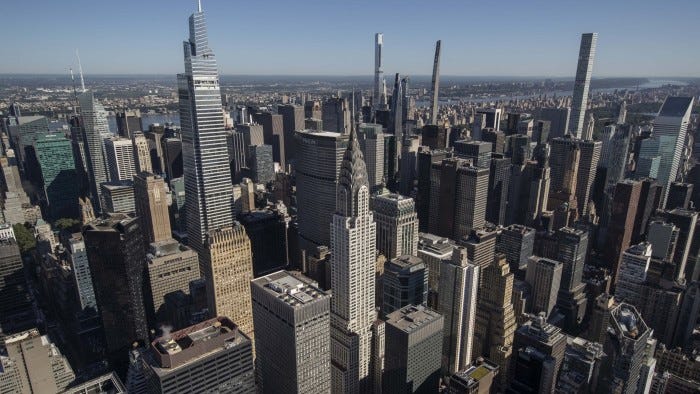
Investment firms are raising billions of dollars to buy stakes in venture capital-backed technology start-ups, as a long drought in acquisitions and initial public offerings forces early investors to offload their stock at discounts.
The start-up secondary market, where investors and employees buy and sell tens of billions of dollars’ worth of shares in privately held companies, is becoming an increasingly important trading venue, in the absence of traditional ways of cashing out and given a slowdown in start-up funding.
Venture secondaries buyers are primed for a busy year as start-up employees look for a way to sell their stock and investors look to return capital to their own backers or reallocate it elsewhere.
Secondary market specialist Lexington Partners last week announced a new $23bn fund to buy up stakes from “large-scale investors”. Lexington had originally aimed to raise $15bn, but upped its target on the back of high demand, and said it was “in the early stages of a generational secondary buying opportunity” that could last years.
The fund will predominantly buy shares from private equity funds but also expects to invest as much as $5bn into venture capital secondaries, said a spokesperson.
“We are seeing crazy amounts of [limited partner investors] that are distressed and need to lighten their venture load,” said the head of a $2bn venture capital firm.
The latest Lexington fund “speaks to the sheer demand” from LPs that feel “over-allocated” to private capital including to start-ups, they said.
Other specialist firms such as Pinegrove Capital Partners, a joint vehicle created by Brookfield Asset Management and Sequoia Heritage, and StepStone have also been raising multibillion-dollar funds to target venture secondaries.
…. Lots More
Founders: getting to the next venture stage may take longer than you expect
Head of Insights @ Carta | Data Storyteller
The median number of days between a priced seed and Series A round hit 679 in 2023, a new peak.
Median for Series A to B was 744 days (over 2 years). Very similar for Series B to C (739 days, also over 2 years).
Fascinating to watch the 25th percentile (green) and the 75th percentile (blue) trends as well. It looks as though the 25th pct has pulled closer to the median for the middle venture rounds - suggesting there are very few companies speed-running through venture fundraising right now.
Some of that could be company choice, as founders have cut spend and become more capital-efficient over the prior 12 months. However, I'm certain a lot of the increase in time is due to VCs being far more choosy about where to invest.
So what are founders doing if primary rounds are not on the menu? Getting creative.
Founders are raising bridge rounds at record rates, usually from insiders already on the cap table. They are turning to SAFEs and Convertible Notes, even between named venture stages. Some are turning to non-dilutive financing and loans.
And many are trying to make customer revenue their primary fundraising channel. But switching from growth at all costs to profitability in a short period of time is no easy track change.
My bet is that the time between rounds plateaus in 2024 (or maybe even declines just a touch). Maybe that's wishful thinking 🙏
New data drops from our 40,000 cap table startups every Thursday morning - head to the URL in graphic to put your name on the list!
#startups #founders #venturecapital #fundraising #cartadata
The State of the SaaS Capital Markets: A Look Back at 2023 and Look Forward to 2024
WRITTEN BY
Another January, another opportunity to make (and break) your New Year’s resolutions, and a new opportunity for us in the venture industry to reflect on the state of the enterprise SaaS markets. We made a good call on the resiliency of the SaaS sector at the beginning of 2023, and remain long-term bullish on SaaS as we have been for years.
This year, we decided to raise the stakes with our outlook, unearthing new data to inform what we anticipate in 2024. We are excited to debut The State of the SaaS Capital Markets annual report. This report highlights the key enterprise software trends we observed in 2023 across both private and public markets, as well as the connection between the two: the exit environment. With this comprehensive set of data views, we share our 2024 predictions regarding the investment environment for enterprise software.
We like to read, so it’s not lost on us that the last month has produced a ton of quality prediction pieces already, including those from Sapphire President, Partner and Co-Founder Jai Das on what to expect in enterprise technology trends in 2024, as well as year-end reports from investment banks and VC data providers. With the first iteration of this report, we aim to distinguish ourselves in a few significant ways:
Our analysis covers both private and public enterprise SaaS markets in detail, including several proprietary views on sub-categories.
Our predictions focus solely on the state of the enterprise SaaS capital markets (vs. the broad technology landscape), including valuations, capital allocation and exits.
Our prognostication is data-driven, based on a thorough look back at what happened in 2023, how that compared to the past decade and recent quarterly trendlines.
To dig into the data, check out the full report here, and read on for our top 10 predictions for 2024, along with two honorable mentions, with select data views from the report that informed our thinking.
TOP 10 ENTERPRISE SAAS PREDICTIONS FOR 2024
1. VC Funding will Grow Incrementally in 2024
2023 marked a second consecutive yearly decline in VC funding (-36% YoY), and at $287B (ex-China), it was roughly flat with 2020. We don’t believe this is due to a lack of innovation, but rather that cupboards were fully stocked in 2021. Investors and entrepreneurs are just now starting to see eye-to-eye on valuations. We expect total funding to grow back into the pre-pandemic trendline (+5-10% overall growth) as investors with ample dry powder incrementally increase deal pacing. We believe enterprise software (including, of course, Gen AI-fueled business models) will continue to be a big driver of total VC investment in 2024.
PayPal is laying off 2,500 employees
The cuts come almost exactly a year after PayPal slashed seven percent of its workforce.
Pranav Dixit, Senior Editor
Tue, Jan 30, 2024 at 1:46 PM PST
PayPal is laying off nine percent of its workforce, the company’s CEO Alex Chriss told staff in a letter on Tuesday that PayPal made public hours later. The decision will impact about 2,500 employees, who will find out their fate between today and the end of the week, Bloomberg reported earlier. PayPal's layoffs come almost exactly a year after the company fired more than 2,000 workers to keep costs down.
Despite thousands of job cuts in 2023, layoffs at tech companies have continued into 2024. On the same day as PayPal's latest layoffs, Jack Dorsey's Block, the company that owns Cash App, Foundational, and Square, conducted its second round of layoffs in two months, cutting nearly a thousand people. Earlier this month, Google laid off more than a thousand workers in its Assisstant and hardware divisions, with CEO Sundar Pichai warning employees to brace for more cuts through the year. Discord, eBay, Riot Games, TikTok, Microsoft, iRobot, Amazon, Unity, and Duolingo, among others, have collectively cut thousands of jobs in January
… More
Startup of the Week
Zum Raises $140M At $1.3B Valuation To Help Kids Get to School Faster With AI
January 31, 2024
When one thinks of AI and its many uses, getting your kid to school faster is likely not the first thing that springs to mind.
However, school bus startup Zum now has 1.3 billion reasons why you should.
The Redwood City, California-based transportation company raised a $140 million Series E led by GIC at a $1.3 billion valuation. Others participating in the round include Climate Investment, and existing investors Sequoia Capital and SoftBank Vision Fund 2.
The new round is a significant jump in value for a company that last raised money in October 2021 — a $130 million Series D — at what was a reported $930 million valuation.
The 40% valuation jump is even more impressive considering 2021 was a very different time in the private markets, with venture capital funding hitting all-time highs. Since then, many companies have seen their valuations significantly cut.
The wheels on the bus are helped by AI
Zum tries to help school districts increase efficiencies and reduce the costs of managing bus fleets through its proprietary platform — that, of course, uses AI. The platform gives districts visibility so they can optimize routes and even deliver real-time updates to parents.
In addition, the startup also has its own fleet of EV buses for districts to use. The company’s platform also can analyze when to discharge and recharge the buses, so the buses can actually send power back to the grid.
Zum’s platform is already being used by schools in San Francisco, Los Angeles, Oakland, Seattle, Chicago and Nashville among others. Zum serves more than 4,000 schools across the U.S.
“Zum is on a mission to revolutionize student transportation, moving beyond the status quo toward a future where innovative technologies are used to advance sustainability efforts,” said founder and CEO Ritu Narayan.
Founded in 2015, Zum has raised $350 million, per the company.
X of the Week
Opinion: The result of all Washington-Silicon Valley tech showdowns? Nothing.
By Adam Lashinsky, Contributing columnist
February 1, 2024 at 5:43 p.m. EST
For a moment, I almost felt sorry for Mark Zuckerberg.
Here was the founder and CEO of Meta, which runs Facebook, Instagram and WhatsApp, making his eighth appearance before a congressional panel on Wednesday. This time, the arena was a hearing of the Senate Judiciary Committee, at which Zuckerberg endured a withering assault from Sen. Josh Hawley (R-Mo.), he of the clenched-fist support for Jan. 6 insurrectionists but now casting himself as the defender of teenage girls.
“You know full well your product is a disaster for teenagers,” Hawley asserted, citing internal Instagram research. Then Hawley asked, six times by my count, who Zuckerberg fired for allowing young people to be harmed. “Thirty-seven percent of teenage girls between 13 and 15 were exposed to unwanted nudity in a week on Instagram,” Hawley said. “You knew about it. Who did you fire?”
Zuckerberg knows better than most that Hawley’s goal was less of an inquiry than a display of political performance art. The tech entrepreneur wasn’t biting, though, and said he wouldn’t respond to the question. Rightly so: The issue at hand should have been fixing the problem, not determining who was punished for behavior that happens to mirror Meta’s product strategy.
But that’s where I lost sympathy for Zuckerberg — and where Hawley began making sense. “Senator, I don’t think it’s appropriate to talk about HR decisions,” Zuckerberg said, mouthing to an elected official the same sort of nonsense executives use on journalists when they don’t want to answer a question. Zuckerberg was answering a legislative provocation with corporate blather, reminding me that he didn’t need my pity.
Hawley then asked Zuckerberg, a billionaire, if he had compensated any of his company’s victims, which include parents of teenagers who have killed themselves. Zuckerberg replied he didn’t believe so and began explaining that it is his company’s job to build tools to address the concerns at hand. But then Hawley talked over him, this time cutting to the heart of the matter: “To make money,” Hawley said twice, implying that no matter what tap dancing Zuckerberg was engaged in, all the tech titan really cares about is profits.
Zuckerberg, who turns 40 in May, is no longer the innocent man-child of Silicon Valley, if he ever was. Sporting longer hair than at his last congressional appearance, he gave off vibes of a weary mogul who now has seen it all. These routine Washington show trials are just part of the price of doing business.
.. More




